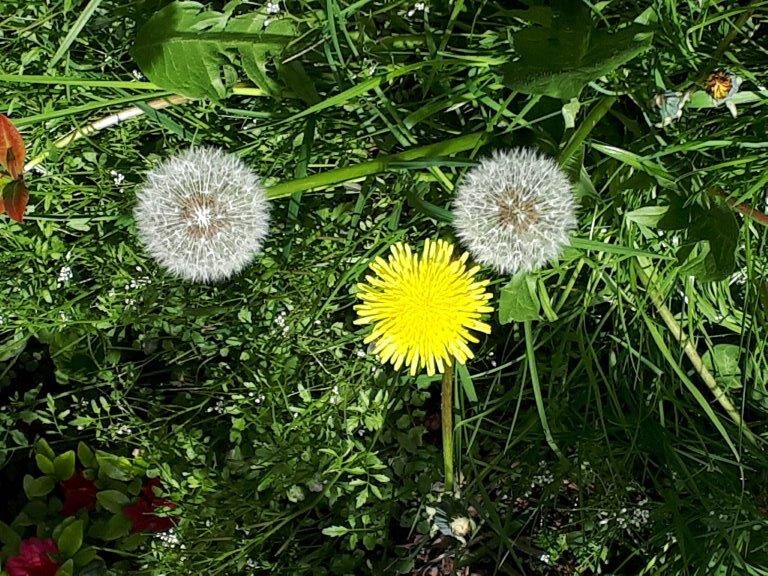MoveUP Environment Committee member Janice Krieger shares some fun facts about dandelions below.
The dandelion is the only flower that represents the three celestial bodies of the sun, moon, and stars: The yellow flower resembles the sun, the puff ball resembles the moons, and the dispersing seeds resemble the stars.
The dandelion flower opens to greet the morning and closes in the evening to go to sleep.
Every part of the dandelion is useful: root, leaves, flower. It can be used for food, medicine, and dye for colouring.
Up until the 1800s, people would pull grass out of their lawns to make room for dandelions and other useful “weeds” like chickweed, malva and chamomile.
The name dandelion is taken from the French word “dent de lion” meaning lion’s tooth, referring to the coarsely-toothed leaves.
Dandelions have one of the longest flowering seasons of any plant.
Dandelion seeds are often transported away by a gust of wind and they travel like tiny parachutes. Seeds are often carried as many as five miles from their origin!
Birds, insects, and butterflies consume nectar or seeds of dandelion.
Honey from bees pollinating dandelions is quite delicious.
Dandelion flowers do not need to be pollinated to form seeds.
Root of dandelion can be used as a substitute for coffee.
Dandelion is used in folk medicine to treat infections and liver disorders. Tea made of dandelion act as a diuretic.
If you know dandelions, they’ll grow shorter stalks to spite you.
Dandelions are, quite possibly, the most successful plants that exist. They are masters of survival worldwide.
A not so fun fact: Every year countries spend millions on lawn pesticides to have uniform lawns of non-native grasses, and use 30% of the country’s water supply to keep them green.



